
Una Notte Epica con Martha Noguera alla Sala Baldini al Teatro di Marcello il 19 giugno 2024 alle ore 20:00
Roma, la Città Eterna, mercoledì 19 giugno si trasforma in un vortice di pura emozione musicale. Dimenticate i soliti concerti patinati, questa è una notte che entrerà nelle leggende, un evento destinato a scuotere le fondamenta stesse del Teatro di Marcello. Nella storica Sala Baldini, Martha Noguera, la dea del pianoforte, si prepara a lanciare un attacco sonoro che lascerà il pubblico senza fiato.
Le prime note di Chopin, l’Allegro de Concerto op. 46, risuoneranno nell’aria come un fulmine che squarcia il cielo di Roma. Dodici minuti di pura elettricità, in cui ogni tasto suonato da Noguera diventa un colpo al cuore. E non finisce qui. La Sonata n. 1 in Do Minore è una corsa sfrenata tra le montagne russe delle emozioni, un viaggio che solo una vera virtuosa può farci vivere. Chopin non è mai stato così vivo, così feroce.
Ma il pezzo forte della serata, il vero colpo da maestro, è la Sonata “Hammerklavier” oP. 106 di Beethoven. Quarantatré minuti di battaglia titanica, un assalto orchestrato con precisione chirurgica da Noguera, che dominerà il pubblico con la sua forza e la sua passione. Questa non è musica classica, è un’epopea sonora, un evento cataclismico che risuonerà nelle menti degli spettatori per molto tempo.
Martha Noguera artista origine italiana, è nata a Buenos Aires incarna entrambe le peculiarità della sua doppia origine. Ha avuto numerosi premi e riconoscimenti nazionali e internazionali. Si è esibita in molte parti del modo (Italia compresa) con acclamato successo.
E prima che inizi lo spettacolo, una visita guidata nell’area storica del Teatro di Marcello e del Portico di Ottavia riservata ai possessori del biglietto. Un preludio perfetto per entrare nel mood giusto, per prepararsi a un’esperienza che è molto più di un semplice concerto: è un rito di passaggio.
Martha Noguera non è solo una pianista, è una forza della natura, un tornado musicale che trasformerà una serata di giugno in una notte indimenticabile.
www.tempietto.it

Martha Noguera in Rome to show us what it means to be a pianist of class. And what a class,that of 38/39/40 with Martha Argerich,Daniel Barenboim etc in Buenos Aires where the Neapolitan school of playing had been brought over by Vincenzo Scaramuzza. Martha Argerich was in Rome just last week with Beethoven and it was Beethoven that Martha Noguera brought too.
Martha Argerich is back in town and there is magic in the air in the Eternal City
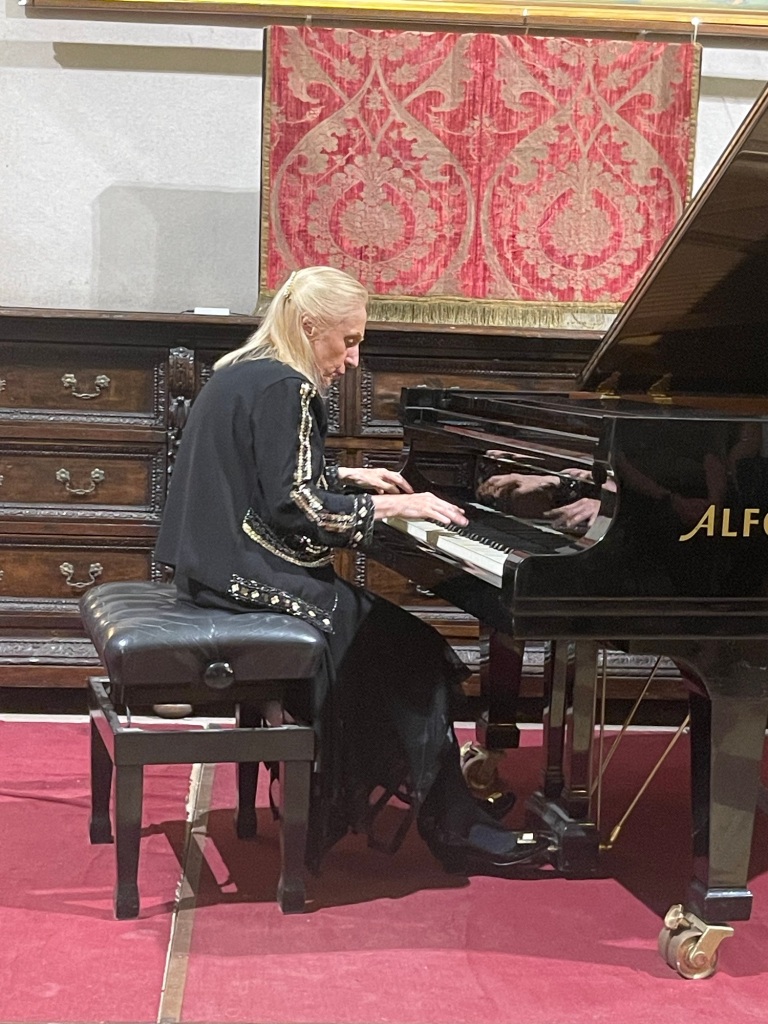
Martha Noguera in Rome in the beautiful Sala Baldini with a programme that would scare most pianists half her age.
Two works by Chopin,the first considered one of the most technically difficult and rarely performed :The Allegro de Concert op 46 and the second a work ,the first Sonata op 4 that I can only ever remember hearing once in the concert hall played by Cherkassky ( as part of a Chopin Trilogy for the students at the Royal Academy ). An early work more in style of Schubert than the Bel Canto that was shortly to follow. After a very short break Martha embarked on Beethoven’s most momentous journey with the Sonata op 106 ‘Hammerklavier’.

Performances that reminded me of Magda Tagliaferro or Vlado Perlemuter for their roots firmly embedded in the harmonic structure and the great architectural line played with chiselled beauty and projection.Like her great colleague Martha has a remarkable arch of the hand and fingers of steel but with wrists and body movements of rubber that can allow the music to flow through her from a lifetime’s experience projecting the musical thought with a concentrated authority and the passionate conviction of a great artist.There was an imposing opening from the very first notes of what was probably to be Chopin’s 3rd Concerto.Full rich sounds resounding in this beautiful and unique hall in the very centre of the Eternal City. An aristocratic sense of spaciousness and timeless beauty where the music was allowed to unfold with simplicity and directness with a chiselled beauty to the melodic line with ornaments that were just streams of ravishing sounds embellishing the beauty of Chopin’s bel canto. As Chopin described to his students,Martha has a rubato where the roots are firmly planted in the ground but the branches above free to flow and move naturally with playing of real weight of a mastery of incredible harmonic cohesion.Playing of sumptuous beauty that filled this beautiful hall with ravishing sounds and the unmistakable beauty of Chopin’s mellifluous outpourings.

The Chopin Sonata op 4 is a very early work but already showing signs of genius but more linked to a formal Schubertian pattern.An imposing first movement played with great clarity and dynamic drive followed by a playful ‘Menuetto’ .But it was the rich chordal opening of the ‘Larghetto’ that spoke so eloquently leading to a mellifluous flowering not yet of Chopin’s bel canto style but of a poignant simplicity and inevitability that was allowed to unfold with such eloquence.The Finale unleashed an explosion of virtuosistic declamations and sparkling brilliance that was played with enviable authority and fingers like limpets that belong to the keys after a lifetime spent of dedication and artistry at the keyboard.
There was a call to arms with the momentous declamation of the ‘Hammerklavier’.The first movement was played with much less pedal that the Chopin which allowed absolute clarity of Beethoven’s knotty twine but also of his overpowering thoughts.There was a dynamic drive with colours of orchestral proportions played with such inevitability and nobility.A searing intensity and contrasts in dynamics that were breathtaking in their daring and rhythmic intensity.A scherzo that seemed rather slow and deliberate for the ‘assai vivace’ indication but it left room for the following ‘Presto’ indication which turned a Brahmsian opening into pure Beethovenian frenzy.

There was a deep rich sound of string quartet proportions to the ‘Adagio Sostenuto’ that was played as Beethoven asks ‘appassionato e con molto sentimento’ . It is the very core of this monumental work and was played with nobility and passion and with a sense of line as the melodic line was allowed to unfold with ever more intensity and deep profundity. A poignancy only broken by the refreshing waves of sounds out of which emerged the monumental Fugue.’ Allegro risoluto’ it was indeed as Martha played with driving rhythms and fearless abandon one of the most difficult works for the keyboard. Richter had played it in London and not being satisfied with his performance he played it all over again as an encore! No encore was necessary tonight as Martha had made a statement that only an artist of her maturity and mastery could offer.Breathtaking,fearless playing of almost improvised freedom as the work evolved from her masterly fingers, as if for the first time ,on a heroic voyage of discovery of one of the greatest works ever written for the keyboard.



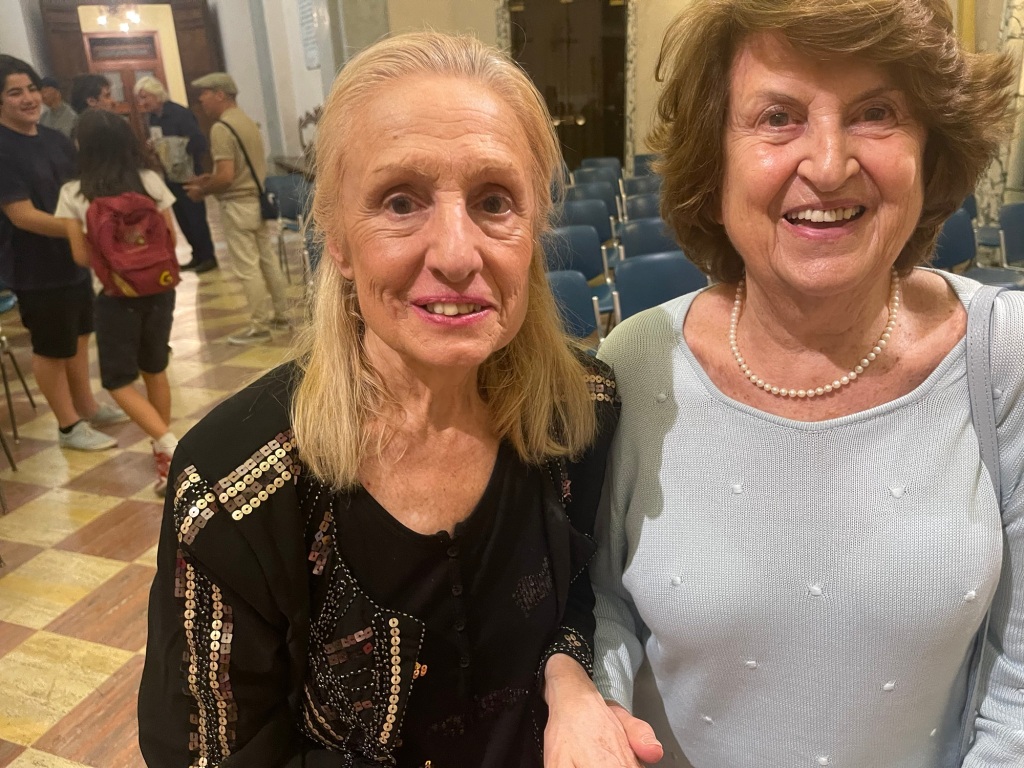


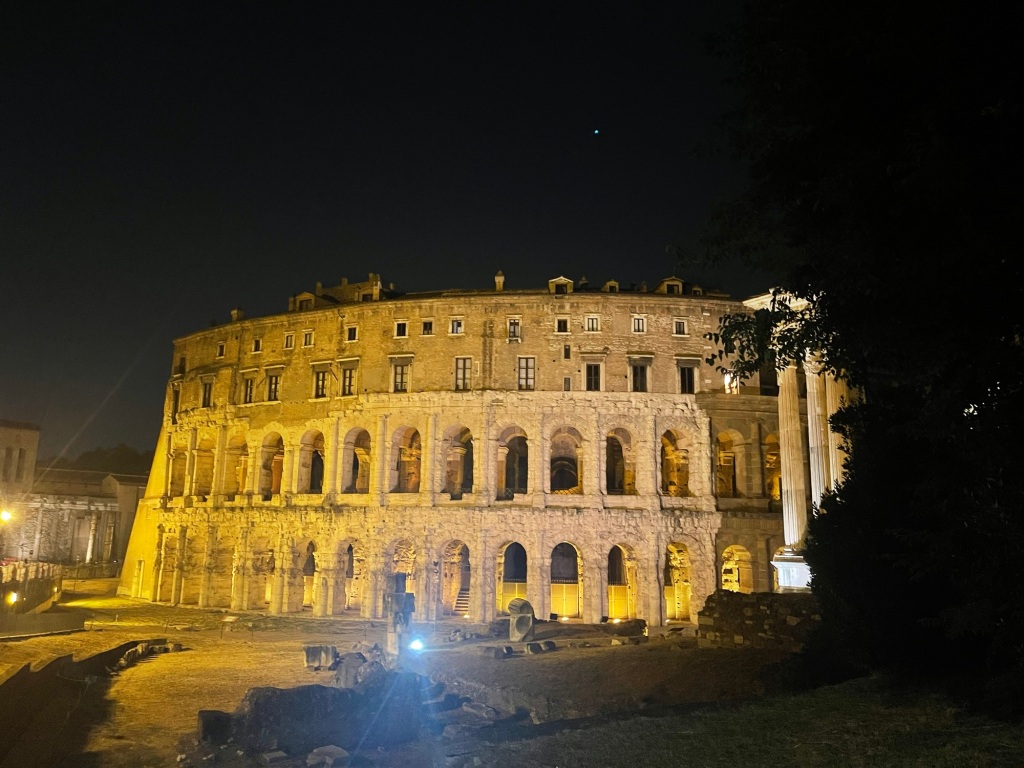
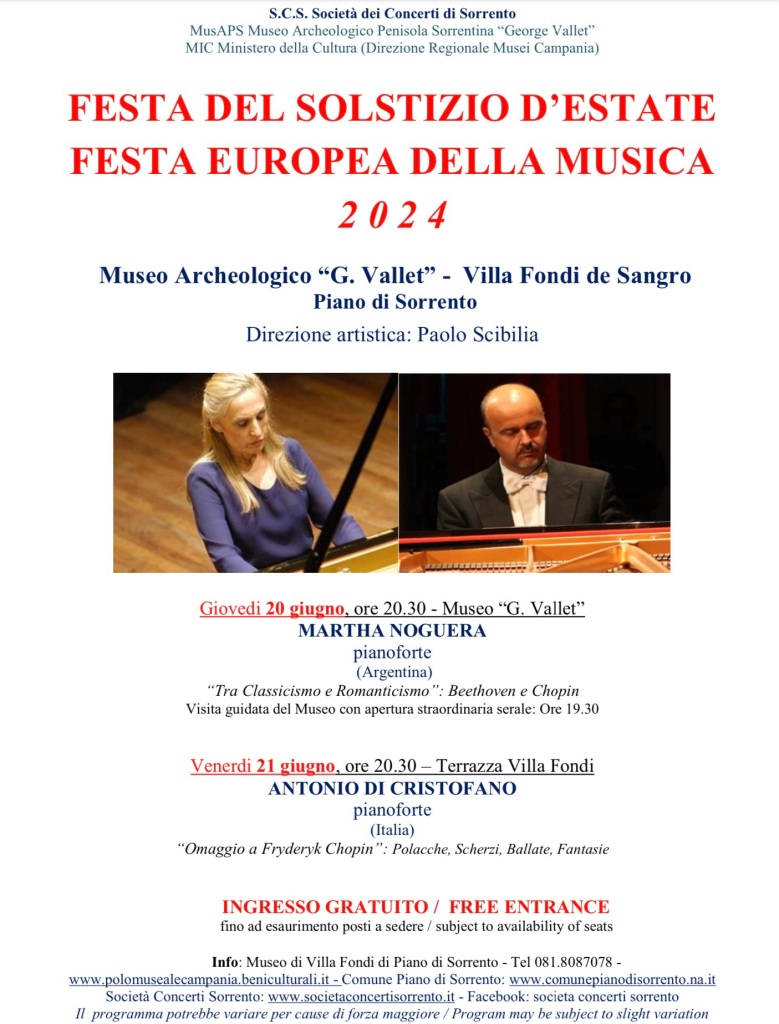
at Villa Fondi
City of Piano di Sorrento
20, 21 June 2024
Artistic direction: Paolo Scibilia
After the great success, on the Sundays of May, of the “ArcheoAperiMusica” festival, the Società dei Concerti
returns to Piano di Sorrento, in the magnificent setting of Villa Fondi di Sangro and the adjoining Archaeological
Museum “Vallet, with 2 other concerts – event with exceptional artists, on the evening of 20 and 21 June, respectively
on the occasion of the Summer Solstice Festival and the European Music Festival (established in 1982 in France to
encourage the promotion of any genre of music on the occasion of the summer solstice and has since spread throughout
Europe).
The two celebratory events are organized by the Municipal Administration of Piano di Sorrento (in the person
of the Mayor Salvatore Cappiello, the Councilor for Culture, Tourism and Entertainment, Giovanni Iaccarino, the head
of Sector I, Giacomo Giuliano), in synergy with S.C.S. Sorrento Concert Society, in collaboration with MusAPS
Archaeological Museum of the Sorrento Peninsula “George Vallet” (in the person of the director, Giacomo Franzese)
and the patronage of the Campania Region.
Artistic director of the initiative, Maestro Paolo Scibilia.
The Museum opens its doors to music, guardian of testimonies of local history and art, to merge more and
more with the city and the rest of the world. It is transformed from a static “container” into a pulsating and aggregating
center of culture in all its forms and manifestations, to make its archaeological collection and the city of Piano di
Sorrento known to an increasingly large number of people, and to promote the universal values of culture and art. The
combination between the art treasures of the “George Vallet” Museum and the music that represents Art in its highest
form is therefore natural; all in the setting of the Gulf of Sorrento, a true work of art of Nature.
The concert on June 20th, at 8.30 pm, will be held inside the Museum, with an opening and extraordinary visit
in the evening. The protagonist is the well-known argentine pianist MARTHA NOGUERA, with the program “Between
Classicism and Romanticism”: Beethoven and Chopin. While the concert on June 21st, at 8.30 pm, in the magnificent
panoramic terrace in front of the Museum and immersed in the lush Mediterranean park. The protagonist is the well-
known Italian pianist ANTONIO DI CRISTOFANO, with the program “Homage to Fryderyk Chopin”: Polonaises,
Jokes, Ballads, Fantasies.
Entrance is free, while seats last.
Info: Villa Fondi Museum in Piano di Sorrento – Tel 081.8087078 – http://www.polomusealecampania.beniculturali.it
Municipality of Piano di Sorrento: http://www.comunepianodisorrento.na.it
Sorrento Concert Society: http://www.societaconcertisorrento.it – Facebook: Sorrento Concert Society
The program may vary due to force majeure / Program may be subject to slight variation
CITTA’ DI PIANO DI SORRENTO
Ass.to Cultura Turismo e Spettacolo
S.C.S. Società dei Concerti di Sorrento
MusAPS Museo Archeologico Penisola Sorrentina “George Vallet”
MIC Ministero della Cultura (Direzione Regionale Musei Campania)
FESTA DEL SOLSTIZIO D’ESTAT

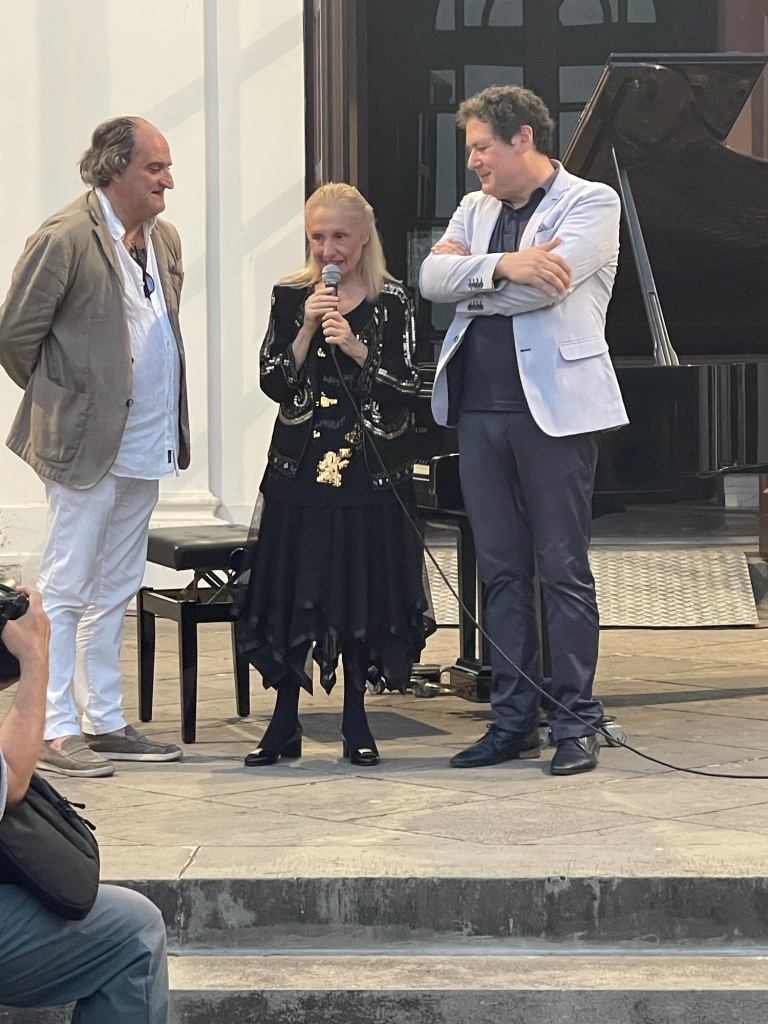
Martha Noguera in Sorrento at the Villa Fondi on the terrace overlooking the Bay of Naples.
And it was here that the Adagio sostenuto ,the very core of Beethoven where he reveals in his last years the profundity that he tried to conceal with his irascible temperament, and it was in this beautiful spot on a piano with amplification that Martha managed to communicate the deepest thoughts and feelings of the Genius from Bonn.
A silence and feeling of mutual communication with an audience not expecting to be treated to one of the greatest works of the piano literature .
Persuaded by our genial host Paolo Scibilia to offer a small encore that would allow us to share in the perfumes of her native Argentina.

Martha sat at the piano and it was magic as she gave a gentle farewell to this unforgettable evening with a little piece by Guastavino full of the beguiling charm and insinuating emotions of the ‘Schubert of the Pampas’. It calmed the red hot air of 30 degrees but also the tension created by Beethoven’s mighty fugue where the composer throws open the gauntlet to those few pianist who dare tread into such forbidden territory .
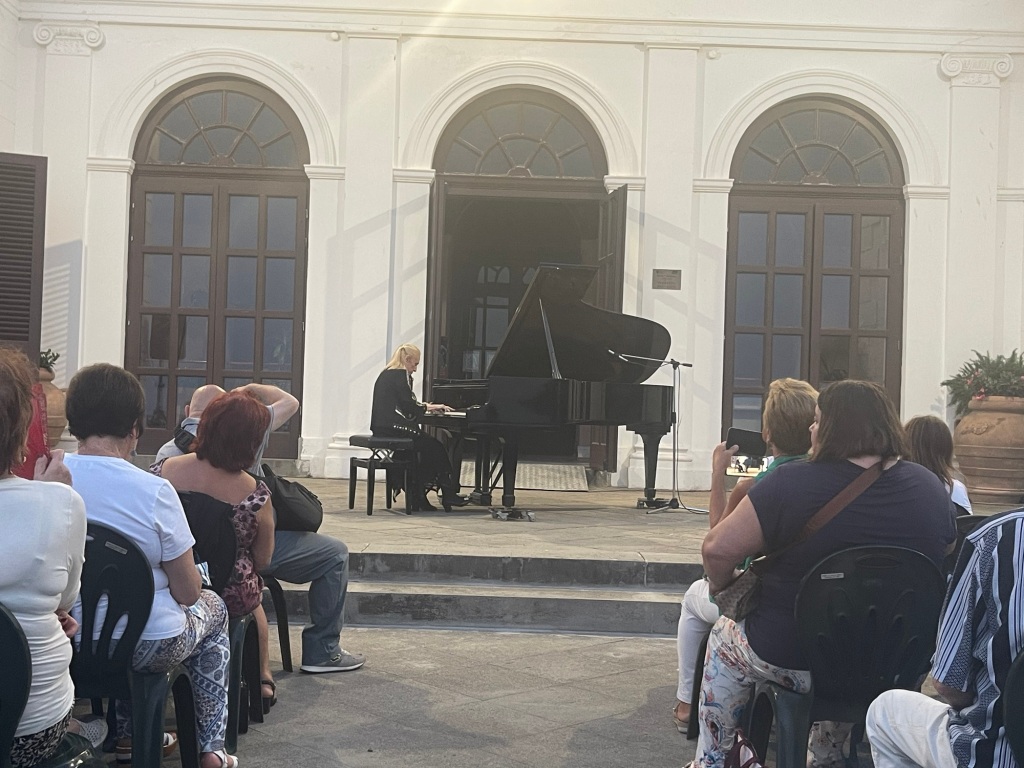
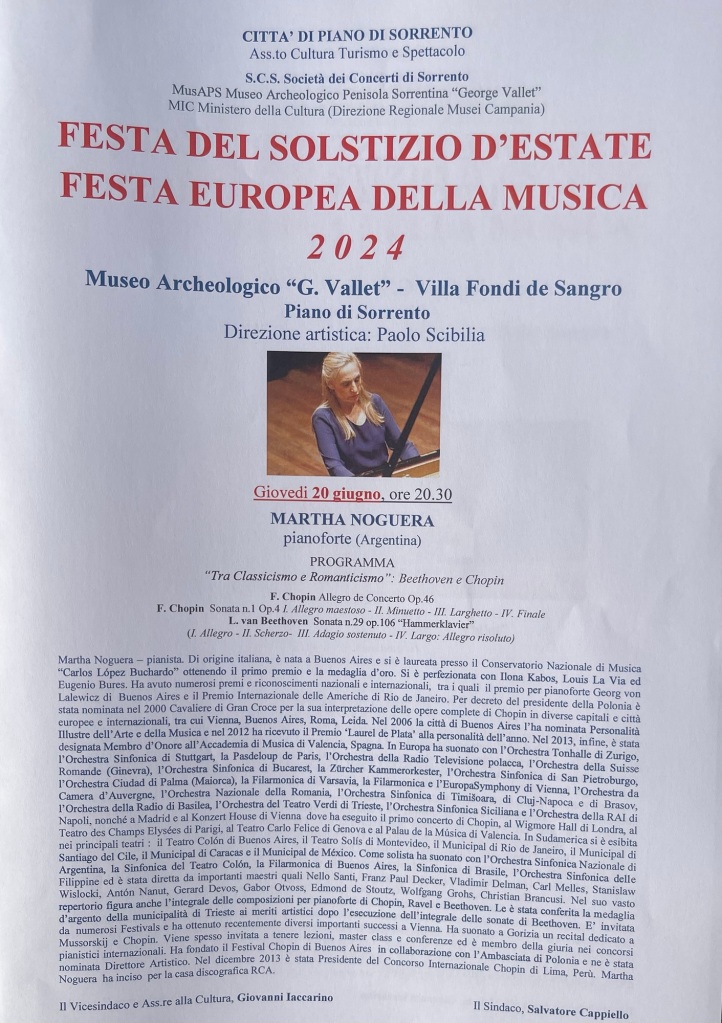
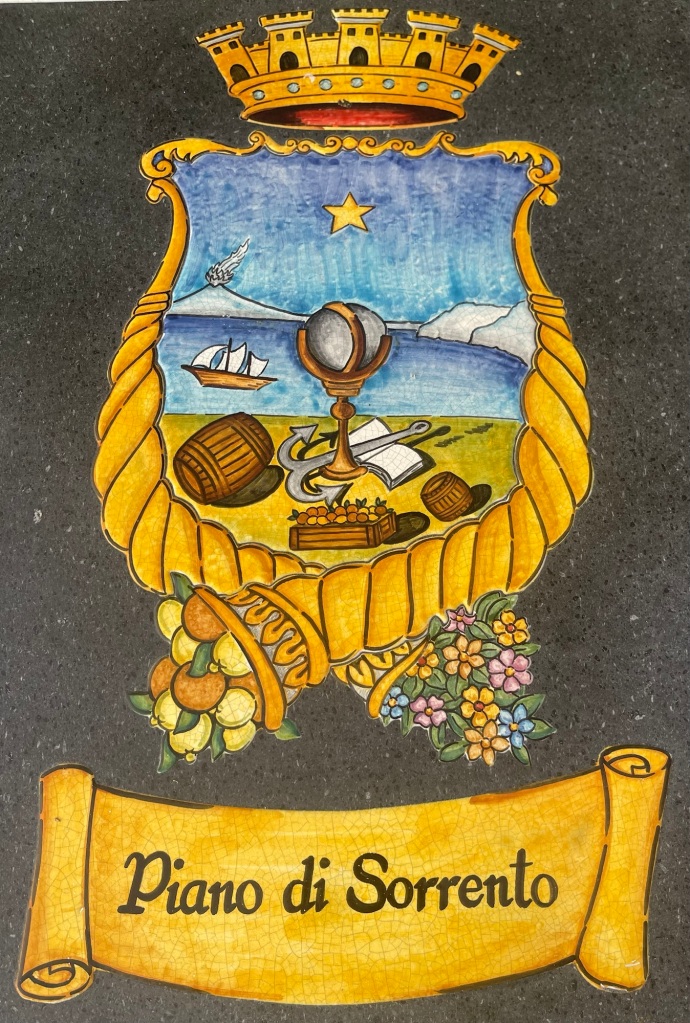
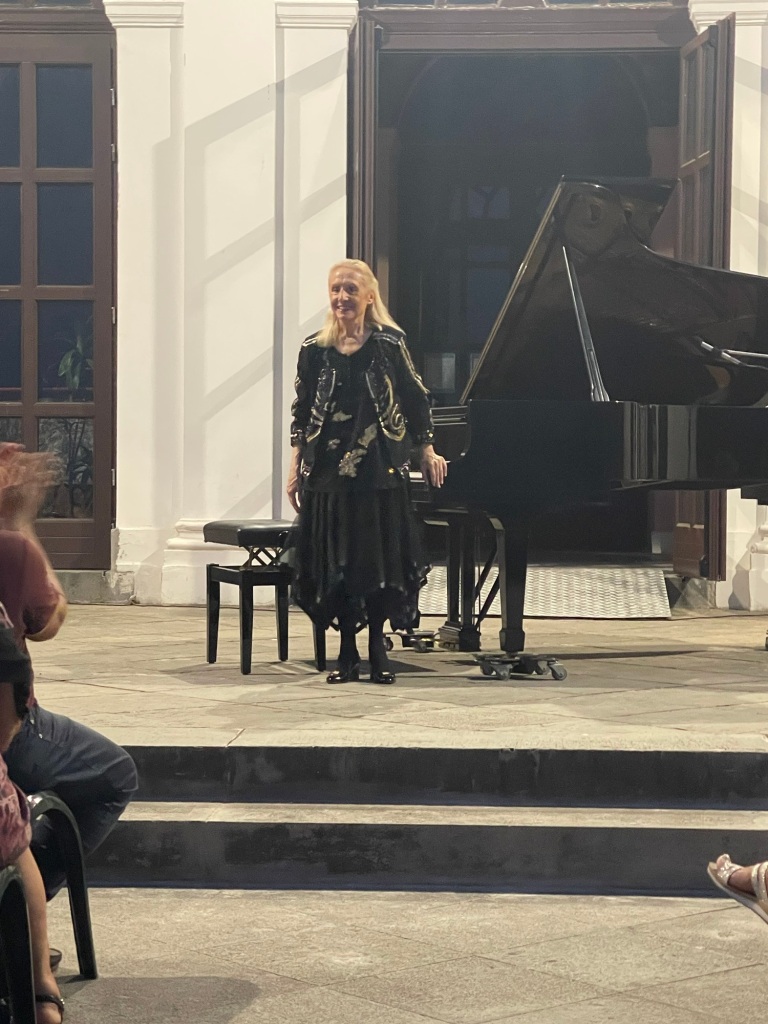
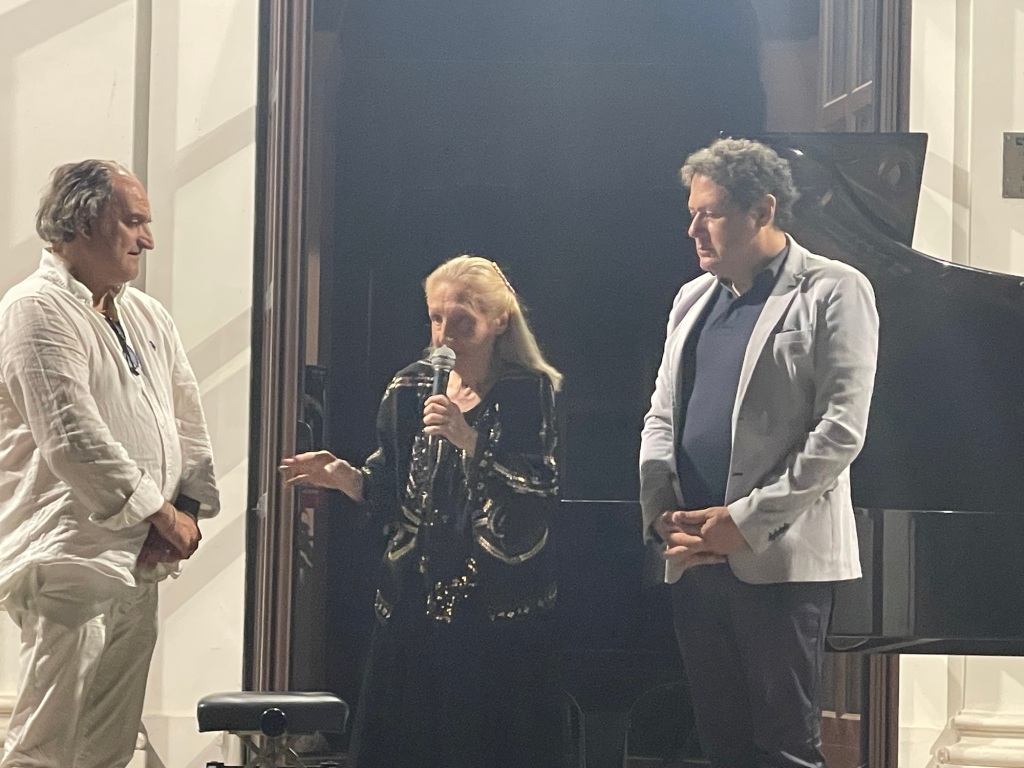




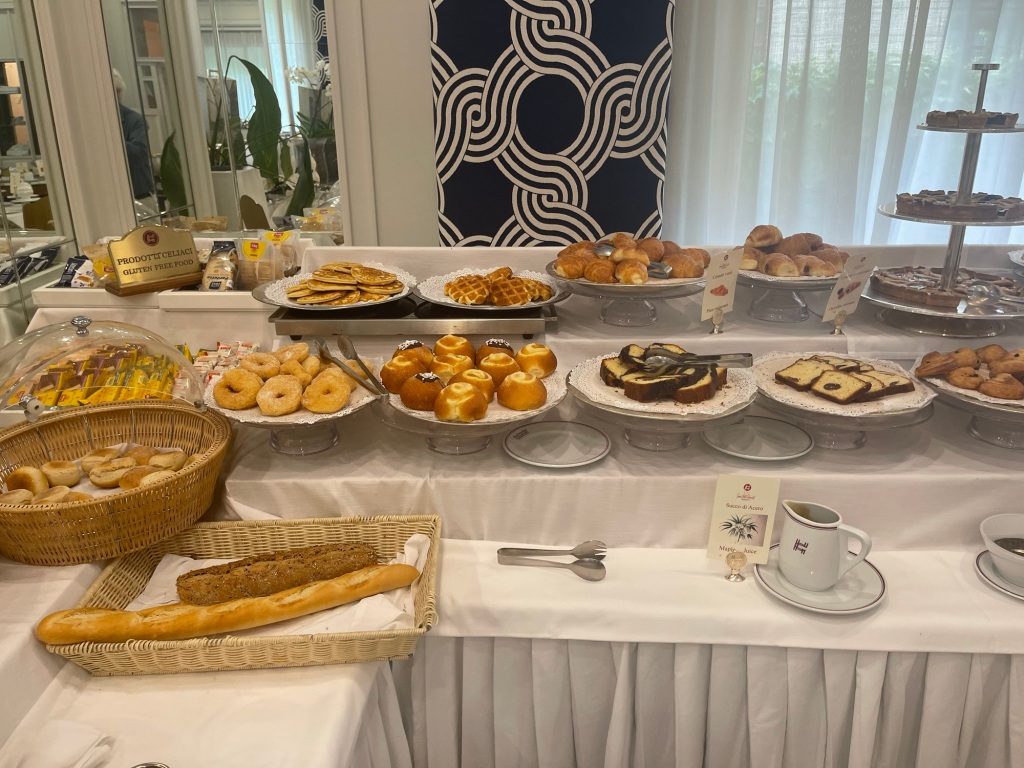

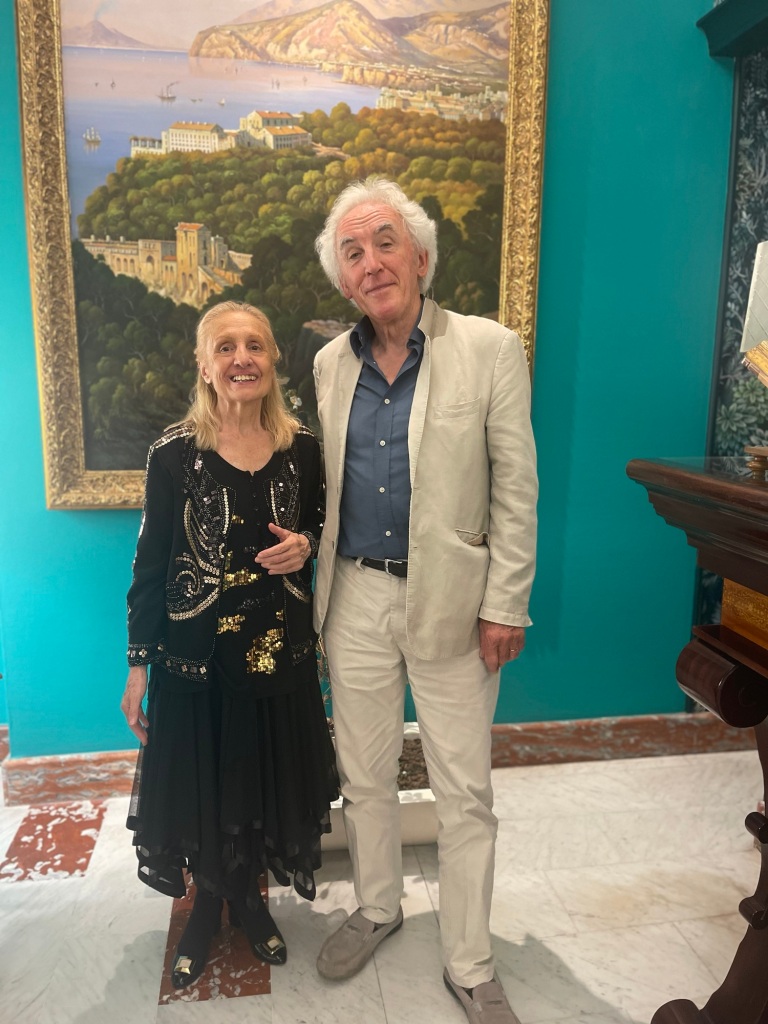
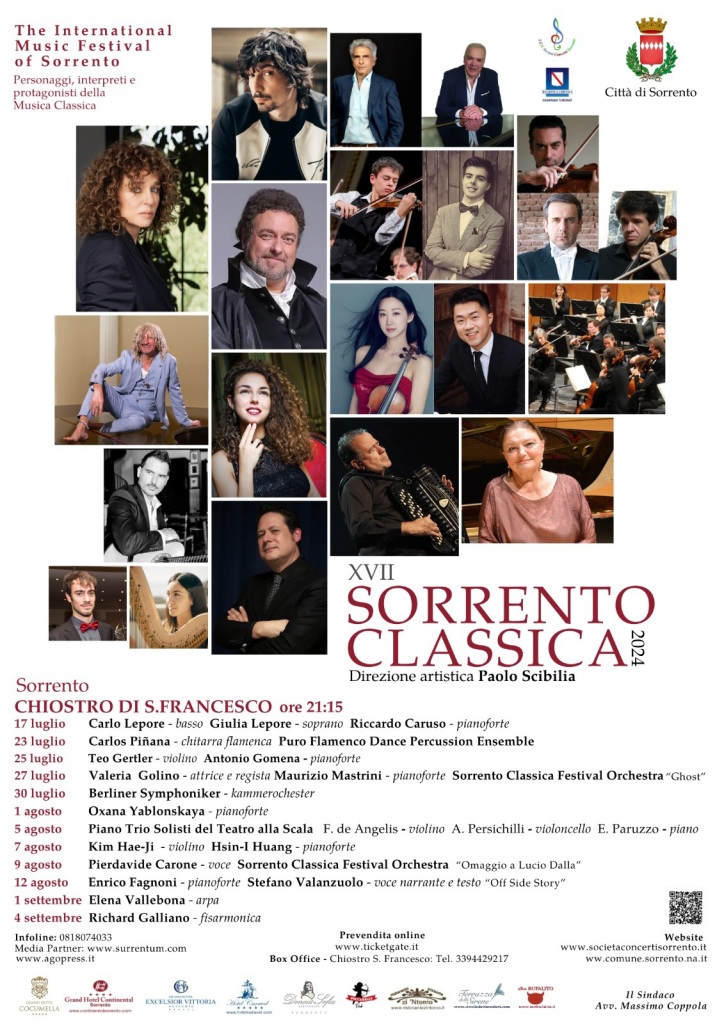
https://christopheraxworthymusiccommentary.com/2024/04/11/oxana-yablonskaya-la-regina-the-queen-of-the-keys/
Recently given to Leslie Howard the great pianist and Liszt scholar and to Marcella Crudeli for 30 years of sustaining the Rome International Piano Competition
https://christopheraxworthymusiccommentary.com/2021/07/31/sorrento-crowns-marcella-crudeli-a-lifetime-in-music/
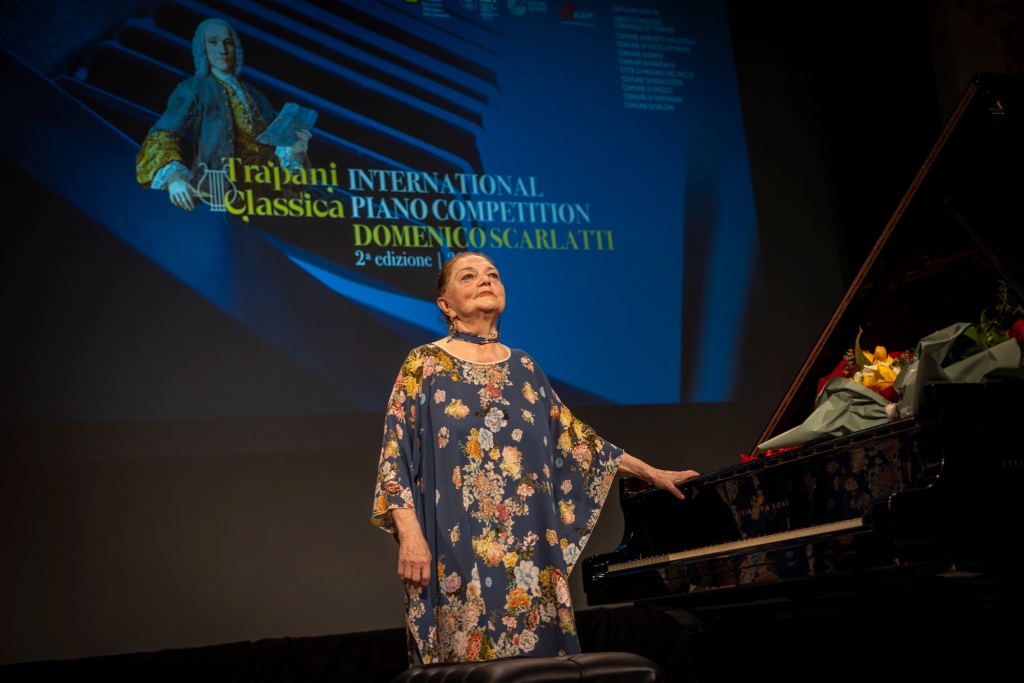

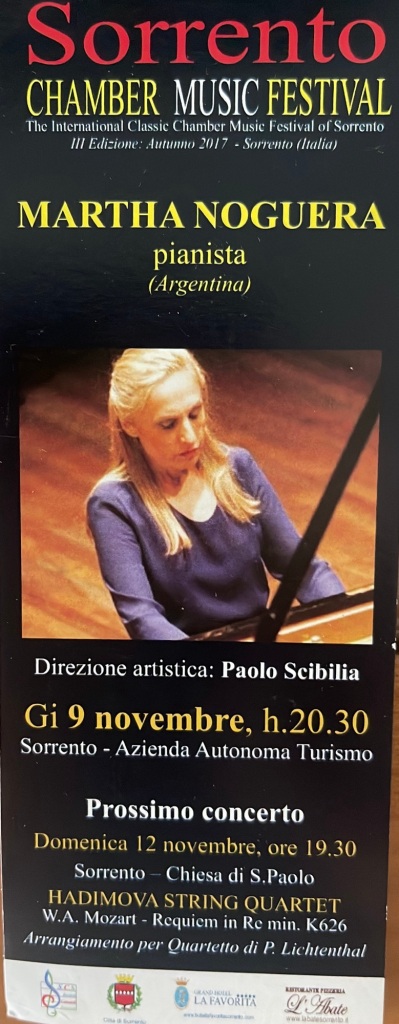
https://christopheraxworthymusiccommentary.com/2017/11/06/homage-to-lya-de-barberiis-martha-noguera-al-ghione/

Chopin’s Allegro de concert, Op. 46, was published in November 1841. It is in one movement and takes between 11 and 15 minutes to play. The principal themes are bold and expressive. It has a curious place in the Chopin canon, and while its history is obscure, the evidence supports the view, shared by Robert Schumann and others, that it started out as the first movement of a projected third piano concerto, of which the orchestral parts are either now non-existent or were never scored at all. There is no evidence that Chopin ever even started work on the latter movements of this concerto.
Chopin published his two piano concertos in 1830. That same year he wrote that he was planning a concerto for two pianos and orchestra , and would play it with his friend Tomasz Napoleon Nidecki if he managed to finish it. He worked on it for some months, but he had the greatest difficulty with it, and this work never eventuated; however, he may have used ideas from it in later works.
There is also evidence that Chopin started work on a third concerto for piano and orchestra. In Chopin: The Piano Concertos, Rink quotes from an unpublished Chopin letter, dated 10 September 1841, offering Breitkopf & Härtel an “Allegro maestoso (du 3e Concerto) pour piano seul” for 1,000 francs.In November 1841, Schlesinger published the Allegro de concert, which has a tempo indication of “Allegro maestoso”, and Breitkopf & Härtel also published it in December of the same year. The work has the general characteristics of the opening movement of a concerto from around that time. It contains a lengthy introduction , with the section corresponding to the original piano solo commencing at bar 87. It seems clear that the “Allegro maestoso” Chopin referred to in his letter was the piece published two months later as Allegro de concert, Op. 46.
The first few notes of the piece were drafted around 1832,but it is not known when the rest of the piece was written. Chopin dedicated it to Friederike Muller ,one of his favourite pupils, who studied with him for 18 months (1839–1841). Franz Liszt gave her the nickname “Mademoiselle opus quarante-six” (“forty six”, the work’s opus number, in French).

Frédéric Chopin 1 March 1810 Zelazowa Wola, Poland
17 October 1849 (aged 39) Paris, France
The Sonata No. 1 in C minor, Op. 4 was written in 1828 (probably begun around July).It was written during Chopin’s time as a student with Jozef Eisner , to whom the sonata is dedicated. Despite having a low opus number, the sonata was not published until 1851 by Tobias Haslinger in Vienna , two years after Chopin’s death.This sonata is considered to be less refined than the later 2 sonatas, and is thus much less frequently performed and recorded.It is in four movements Allegro maestoso ;Menuetto; Larghetto ;Finale :Presto
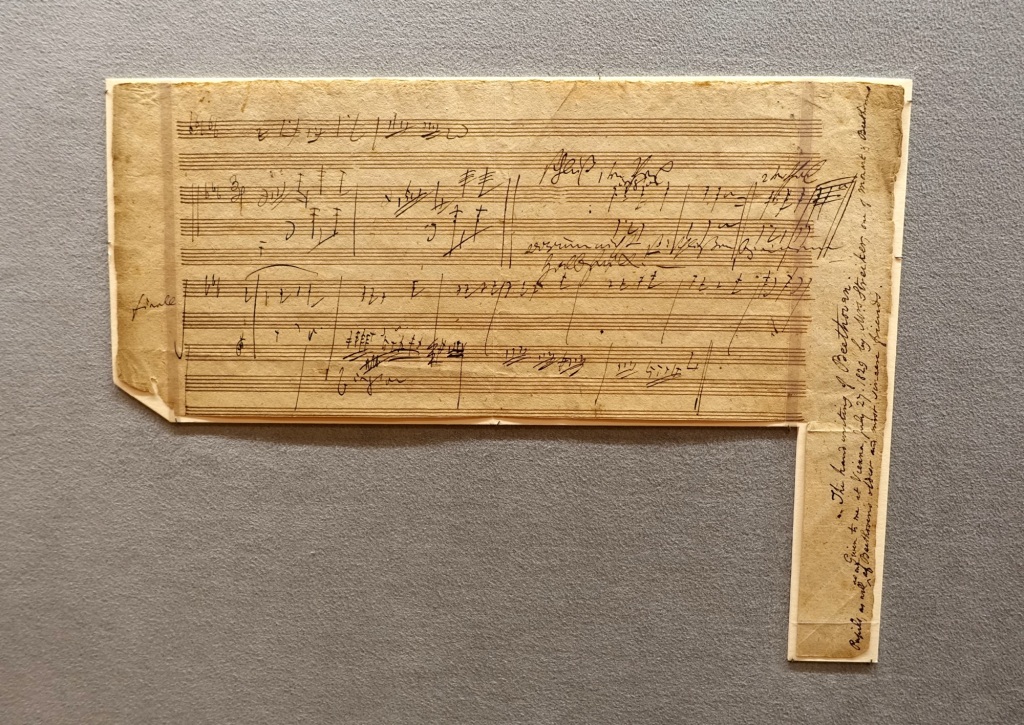

17 December 1770,Bonn 26 March 1827 (aged 56) Vienna
Beethoven’s Piano Sonata No. 29 op 106 (known as the Große Sonate für das Hammerklavier, or more simply as the Hammerklavier) is widely viewed as one of the most important works of the composer’s third period and among the greatest piano sonatas of all time. Completed in 1818, it is often considered to be Beethoven’s most technically challenging piano composition and one of the most demanding solo works in the classical piano repertoire.The first documented public performance was in 1836 by Franz Liszt in the Salle Erard in Paris to an enthusiastic review by Hector Berlioz Dedicated to his patron, the Archduke Rudolf , the sonata was written primarily from the summer of 1817 to the late autumn of 1818, towards the end of a fallow period in Beethoven’s compositional career. It represents the spectacular emergence of many of the themes that were to recur in Beethoven’s late period: the reinvention of traditional forms, such as sonata form ; a brusque humour; and a return to pre-classical compositional traditions, including an exploration of modal harmony and reinventions of the fugue within classical forms
The four movements are:
- Allegro
- Scherzo : Assai vivace
- Adagio sostenuto
- Introduzione: Largo… Allegro – Fuga :Allegro risoluto

Carlos Guastavino (5 April 1912 – 29 October 2000)was an Argentine composer, considered one of the foremost composers of his country. His production amounted to over 500 works, most of them songs for piano and voice, many still unpublished. His style was quite conservative, always tonal and lushly romantic . His compositions were clearly influenced by Argentine folk music. His reputation was based almost entirely on his songs, and Guastavino has sometimes been called “the Schubert of the Pampas”. Some of his songs, for example Pueblito, mi pueblo, La rosa y el sauce (“The Rose and the Willow”) and Se equivoco la Paloma (“The Dove Was Mistaken”),became national favorites. Unlike most other composers, at any time or place, Guastavino earned enough from his royalties and performing rights that he had little need for other income.